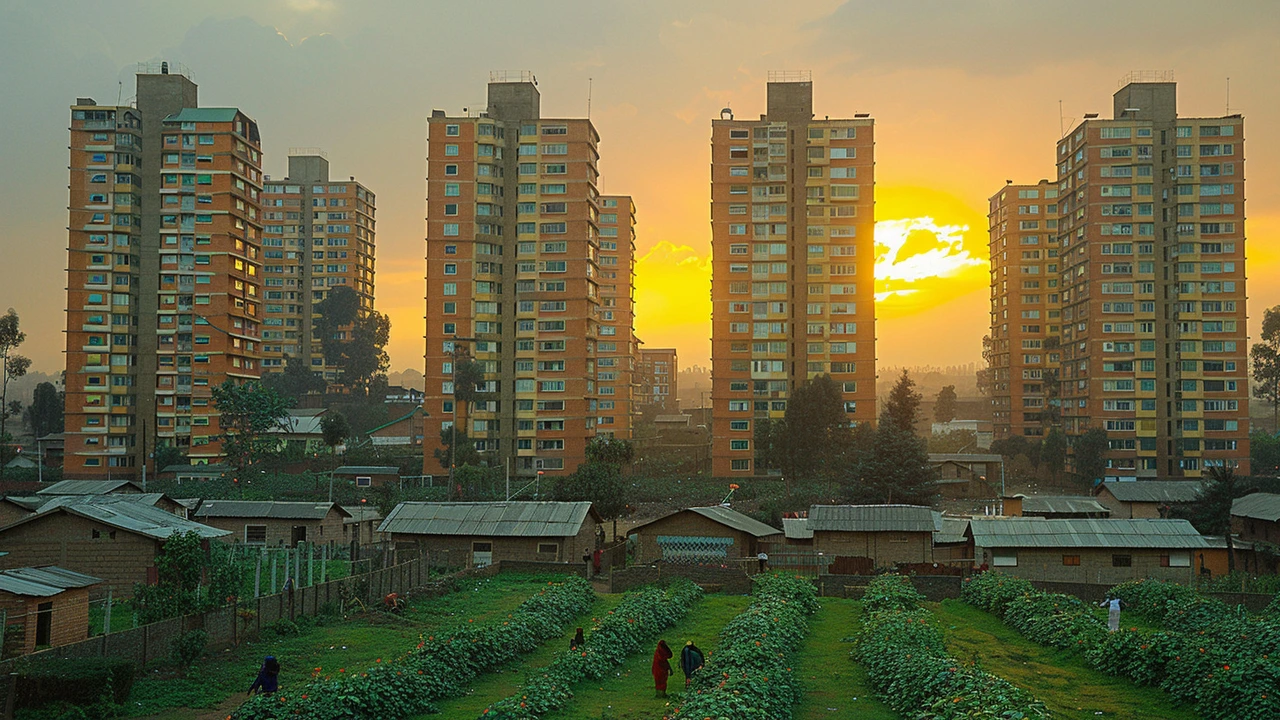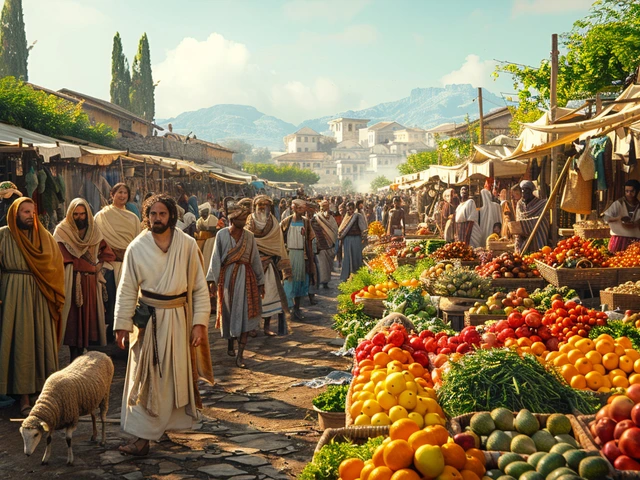Overview of Ethiopian Housing
The landscape of Ethiopian housing is as varied and dynamic as its rich cultural tapestry. From rustic, thatch-roofed huts in rural areas to sleek, modern apartments in bustling cities like Addis Ababa, the country offers a wide range of living accommodations to suit different preferences and budgets. Traditional Ethiopian homes, known as 'Tukuls', are still prevalent in many rural parts of the country. These round huts, made from mud and wood, with thatched roofs, reflect a way of life that has been part of Ethiopian culture for centuries. On the other end of the spectrum, urban areas, especially the capital, are seeing a surge in the construction of high-rise apartment buildings, catering to the growing middle class and expatriates looking for modern conveniences and security.
Despite this diversity, Ethiopia faces significant challenges in its housing sector. Rapid urbanization and population growth have put a strain on existing infrastructure, leading to housing shortages in urban areas and the proliferation of informal settlements, or 'shantytowns'. The Ethiopian government, through initiatives like the Integrated Housing Development Programme (IHDP), has been working to address these issues by constructing affordable housing units for low and middle-income citizens. However, the demand still far exceeds the supply, making housing affordability a critical issue for many.
Types of Housing Available
In Ethiopia, housing options vary widely depending on location, budget, and personal preferences. In rural areas, the predominant type of housing remains the Tukul. These homes, while basic, are built to withstand the local climate and are ingrained in the cultural identity of the country's rural population. In urban centers, residents can choose from a variety of living spaces, including condominiums, apartments, and single-family homes. Condominiums, often part of government housing projects, are popular among middle-income families for their relative affordability and sense of community. Apartments, ranging from basic to luxury, offer more privacy and amenities but at a higher cost. Single-family homes, though less common in densely populated cities, can be found in suburban areas and offer more space and independence.
The recent government initiatives have also paved the way for the construction of '20/80' and '40/60' housing schemes, named after the payment schemes that allow residents to pay 20% or 40% of the home's cost upfront and the rest over time. These projects are aimed at alleviating the housing shortage by providing affordable options to lower and middle-income segments of the population. Despite these efforts, the waiting list for these homes is long, and the process can be slow, leaving many families waiting for years to secure a home.
Costs Associated with Housing
The cost of housing in Ethiopia varies widely depending on the type of accommodation, location, and market conditions. In rural areas, the cost of building a traditional Tukul can be relatively low, primarily if local materials are used. However, in urban areas, especially in the capital, housing costs have been on the rise due to increased demand and inflation. The price of purchasing an apartment or a house in Addis Ababa can be prohibitively expensive for many, with costs ranging significantly based on size, location, and amenities. Renting is a common option for those who cannot afford to buy, but rental prices have also been increasing, making it challenging for low-income families and individuals to find affordable accommodation.
Utilities and maintenance costs must also be considered when assessing the overall cost of living in Ethiopian housing. While utilities like water and electricity might be more affordable in rural areas, they can be inconsistent. In urban settings, the cost of utilities, along with internet and cable services, can add a significant amount to monthly expenses. It's important for those looking to move or invest in Ethiopian real estate to conduct thorough research and possibly consult with local real estate agents to gain a better understanding of current market conditions.
Living Conditions and Quality of Life
Living conditions in Ethiopian housing can vary drastically from region to region and between urban and rural settings. In rural areas, many homes lack access to basic services like clean water, electricity, and sanitation facilities. This, combined with the use of traditional cooking methods, can negatively impact health and overall quality of life. Urban dwellers, while generally having better access to services, often face challenges related to overcrowding, pollution, and in some cases, inadequate housing conditions in informal settlements.
The government and various NGOs are working to improve living conditions by investing in infrastructure, promoting sustainable building practices, and providing access to clean water and sanitation. For expatriates and well-to-do locals, living in gated communities or upscale apartments can offer a high quality of life with access to amenities such as gyms, swimming pools, and secure parking. However, the reality for many Ethiopians is a struggle to find affordable, safe, and comfortable housing. As the country continues to develop and address its housing challenges, the hope is that more Ethiopians will have access to homes that not only meet their basic needs but also provide a foundation for a better quality of life.

 Ethiopian Teacher Salaries: What to Expect in 2024
Ethiopian Teacher Salaries: What to Expect in 2024
 The 7 Essential Occupations: A Deep Dive into Career Choices
The 7 Essential Occupations: A Deep Dive into Career Choices
 Top Countries for Pharmaceutical Jobs: Where to Look in 2024
Top Countries for Pharmaceutical Jobs: Where to Look in 2024
 Exploring Professions in the Bible: Ancient Jobs and Roles
Exploring Professions in the Bible: Ancient Jobs and Roles
 Why Ethiopia is Thriving: Unveiling the Secrets Behind Its Success
Why Ethiopia is Thriving: Unveiling the Secrets Behind Its Success
Horace Wormely
April 4, 2024 AT 01:27The overview accurately captures Ethiopia's housing diversity.
christine mae cotejo
April 4, 2024 AT 15:20When I first read this piece, I was struck by the vivid tapestry of living spaces that stretches from humble thatch‑roofed tukuls in the countryside to gleaming high‑rise apartments that glitter against the Addis skyline. The narrative paints a picture of a nation balancing reverence for age‑old traditions with the relentless pull of modernity, and that contrast is nothing short of dramatic. Rural dwellings, built from mud, wood, and thatch, embody centuries of cultural continuity, yet they also face the stark realities of limited utilities and infrastructure. Meanwhile, urban development surges forward, driven by a burgeoning middle class and an influx of expatriates craving comfort and security. The government's Integrated Housing Development Programme attempts to bridge the gap, but the waiting lists suggest a monumental challenge in scaling supply. The 20/80 and 40/60 financing schemes are clever mechanisms designed to lower the barrier to entry, but their long processing times can be discouraging for families with pressing needs. Inflationary pressures have pushed both purchase and rental prices upward, squeezing low‑income households even further. Utilities, too, remain a hidden cost that can dramatically affect monthly budgets, especially when outages and intermittent supply are factored in. The article wisely advises prospective buyers to consult local agents, a step that cannot be overstated in a market as complex as Ethiopia's. In addition, the mention of NGOs’ involvement highlights the multi‑layered approach required to improve living conditions across the board. As the country continues its rapid urbanization, the tension between preserving cultural heritage and embracing modern conveniences will only intensify. The piece does an admirable job of laying out these competing forces, inviting readers to contemplate the social and economic implications of a housing crisis that touches every corner of Ethiopian life. In sum, this exploration serves as both an informative guide and a poignant reminder that a home is more than bricks and mortar; it is a vessel of identity, security, and hope for countless Ethiopians.
Douglas Gnesda
April 5, 2024 AT 05:13From a market‑analysis perspective, the housing segment in Ethiopia can be segmented into three primary strata: informal settlements, subsidized government housing, and private‑sector premium developments. The informal sector, often characterized by sub‑standard construction and limited access to utilities, still accounts for an estimated 30‑40% of the urban dwelling stock, according to recent UN‑Habitat data. Conversely, the Integrated Housing Development Programme (IHDP) leverages public‑private partnerships to deliver affordable units, employing modular construction techniques that reduce per‑unit costs by up to 15%. The 20/80 and 40/60 schemes effectively function as staggered amortization schedules, allowing borrowers to front‑load capital expenditures while deferring remainder payments over a 10‑ to 20‑year horizon. However, the financing pipeline is constrained by limited mortgage penetration-bank‑issued mortgages represent less than 5% of total residential financing, reflecting both credit risk aversion and underdeveloped collateral frameworks. On the supply side, land‑use regulations in Addis Ababa have been progressively relaxed to incentivize high‑rise erection, thereby improving land‑use efficiency and fostering vertical densification. Nonetheless, construction material price volatility-especially for cement and steel-has introduced cost‑escalation risks that may erode affordability margins unless mitigated through bulk procurement contracts or local material substitution strategies. Utility integration remains a critical variable; the mean time between service disruptions for electricity in urban districts exceeds 4 hours per month, affecting both tenant satisfaction and operating expenses. In summary, the Ethiopian housing market presents a complex interplay of demand‑side pressure, policy‑driven supply interventions, and financing bottlenecks that collectively shape the sector's trajectory.
Abhijit Pimpale
April 5, 2024 AT 19:07The piece glosses over the fact that many urban projects lack transparent procurement, leading to inflated costs and delayed delivery.
Eric DE FONDAUMIERE
April 6, 2024 AT 09:00Yo! This is seriously interestin and i think anyone lookin at Ethiopia's housing should defintely check out the new 20/80 scheme. It's a legit game‑changer for folks who cant afford the whole up‑front price. Remeber, though, to watch out for hidden fees and make sure the developer has a good track record. Get in touch with a local real estate agent who knows the area and can guide you through the process. Good luck and happy house hunt!
🚀
Pauline Herrin
April 6, 2024 AT 22:53While the author provides a comprehensive overview, the analysis would benefit from a more rigorous examination of the fiscal sustainability of the IHDP initiatives, particularly in relation to Ethiopia's broader fiscal deficit.
pradeep kumar
April 7, 2024 AT 12:47The claim that government housing is affordable overlooks the reality of long waiting lists and the opaque allocation criteria that often sideline the most vulnerable.
love monster
April 8, 2024 AT 02:40It’s encouraging to see the discussion around mixed‑use developments that incorporate communal green spaces and sustainable building materials; these features can significantly improve residents’ quality of life while also reducing the carbon footprint of new constructions.
Christian Barthelt
April 8, 2024 AT 16:33Although mixed‑use projects sound appealing, the added complexity often translates into higher per‑unit costs, which can undermine the very affordability goals they aim to achieve.
Ify Okocha
April 9, 2024 AT 06:27The article fails to address the systemic corruption that inflates construction costs and erodes public trust in housing initiatives, making any touted affordability figures largely meaningless.
William Anderson
April 9, 2024 AT 20:20The sheer audacity of proclaiming progress while millions languish in shantytowns is a theatrical display of delusion, betraying an elitist narrative that glorifies glittering towers over genuine human need.
Sherri Gassaway
April 10, 2024 AT 10:13One might contemplate whether the notion of "home" transcends the material constraints outlined, urging a deeper reflection on the existential dimensions of shelter in an ever‑changing sociocultural landscape.
Milo Cado
April 11, 2024 AT 00:07It’s wonderful to see such detailed coverage of Ethiopia’s housing challenges; together we can foster progress and support sustainable development! 😊
MONA RAMIDI
April 11, 2024 AT 14:00Your optimistic tone ignores the harsh reality that many families are stuck in perpetual insecurity; it’s time for a blunt assessment of the crisis.
grace riehman
April 12, 2024 AT 03:53Hey guys, just wanted to say thanks for sharing dis info! It's super helpful, especially for folks like me who are new to the topic. Keep up the great work! :)